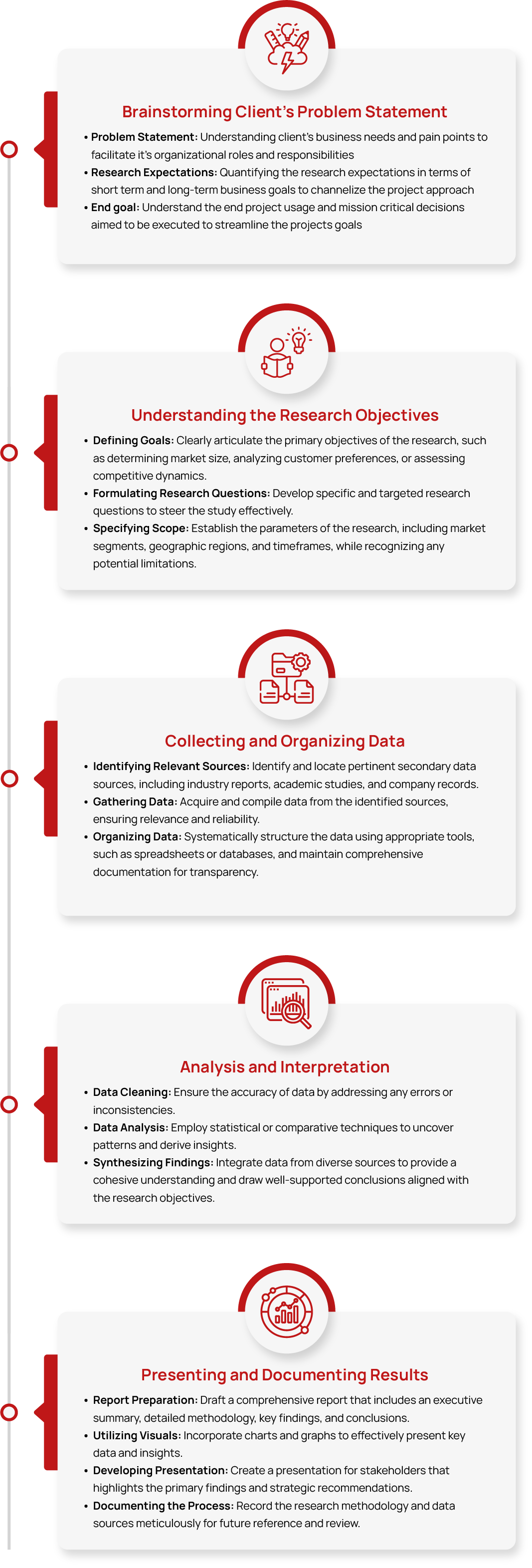Global Organic Food & Beverage Market Size, Share, Growth & Trend Analysis Report, 2032
- Summary
- Market Landscape
- Methodology
- Table of Contents
Global Organic Food & Beverage Market Size, Share, Growth, & Trend Analysis Report, By Product (Organic Food, Organic Beverages), By Distribution Channel (Convenience Stores, Specialty Stores and Others), By Region and Forecasts 2024 – 2032
Organic Food & Beverages refers to products grown without the use of synthetic pesticides, fertilizers, or genetically modified organisms (GMOs). These foods are cultivated using natural methods that promote environmental sustainability, preserve soil health, and reduce exposure to harmful chemicals. As consumers become more health-conscious, organic food has gained popularity for its perceived health benefits and eco-friendly practices.
The Global Organic Food & Beverage Market was valued at approximately USD XX billion in 2024 and is projected to reach USD XX billion by 2032, growing at a Compound Annual Growth Rate (CAGR) of around 14% during the forecast period from 2025 to 2032.
Industry Trends
As per food and beverage industry analysis conducted by “The Research Institute of Organic Agriculture”, Organic farming is practiced across 191 countries, with more than 76 million hectares of agricultural land dedicated to organic practices. This trend is fueled by an increasing number of consumers who are prioritizing the health benefits of organic foods, as well as their environmental impact.
Consumers are becoming more conscientious of where their food comes from and how it is produced, leading to the rise of organic food options in mainstream supermarkets, restaurants, and even fast-food chains.
The demand for organic food is primarily driven by a growing desire for healthier, eco-friendly, and ethically produced food. Consumers are increasingly aware of the potential health risks associated with synthetic pesticides, fertilizers, and genetically modified organisms (GMOs) found in conventional food products. As more people become conscious of these risks, they are turning to organic alternatives. Organic farming practices prioritize soil health, water conservation, and biodiversity, which resonate strongly with consumers who want to reduce their carbon footprint.
However, the market faces significant challenges that could potentially hinder its long-term sustainability. One major challenge is the high production costs associated with organic farming. Organic methods typically require more labor-intensive practices, which can lead to higher costs for farmers. Additionally, the certification process for organic products can be expensive and time-consuming, particularly for small-scale farmers.
Despite these challenges, the organic food trends suggest continuous market expansion, driven by consumer awareness and regulatory support.
Industry Expert's Opinion:
- Helle Borup Friberg, Director, Organic Denmark and Chair of the Innovation Centre for Organic Agriculture.
"The Innovation Centre’s goal is to develop sustainable organic agriculture for the future. This means that the first link in the chain – the farmer and agricultural advisers – requires access to the best and most up-to-date knowledge. The demands of organic production, together with those of food in general, are always evolving in both society and the market itself with the attendant emergence of professional opportunities and requirements. This is where the Centre's innovation and knowledge will provide answers and show the way forward for agriculture's green transition.”
- Hans Erik Jørgensen, Organic farmer and Chair of the Organics Section, Danish Agriculture & Food Council.
“There is huge potential in organics that we can unleash through our ambition to innovate and develop. The new Centre must have knowledge as its focal point and be the first port of call. It should strengthen the organic farmer’s financial basis so that Denmark has a broad foundation of committed organic farmers and producers in Denmark.”
TT Consultants’ Perspective
The organic food and beverages market is experiencing steady growth, driven by increasing consumer awareness of health, sustainability, and environmental concerns. Demand is rising for clean-label, non-GMO, and chemical-free products across categories such as fruits, vegetables, dairy, meat, and beverages.
Regulatory support, certifications, and eco-friendly packaging are influencing industry trends. Supply chain challenges, premium pricing, and limited organic farmland remain key hurdles. E-commerce and direct-to-consumer channels are expanding accessibility. Innovations in organic farming techniques and plant-based alternatives are shaping the industry's evolution.
Market Segmentation
1. By Product (Organic Food, Organic Beverages)
Organic food products have become increasingly popular due to their perceived health benefits and sustainability. This segment includes a wide range of food items such as fruits, vegetables, grains, meat, dairy products, and snacks. The organic food segment accounts for a significant share of the global organic food and beverage market.
For instance, in 2024, the global revenue for organic food alone was valued at over US XX billion, with fruits and vegetables leading the market. Organic beverages, including non-dairy beverages, juices, coffee, tea, and soft drinks, are gaining significant traction in the global market due to the increasing shift toward natural, plant-based alternatives.
This segment is expected to grow exponentially, with organic coffee and tea showing the highest growth potential. Organic beverages, particularly non-dairy drinks, accounted for about XX% of the organic food and beverage market share in 2024. The rise in veganism and plant-based diets has contributed heavily to the demand for organic non-dairy beverages.
2. By Distribution Channel (Convenience Stores, Specialty Stores and Others)
Convenience stores have become an important retail channel for organic food and beverages, accounting for over XX% of the global organic food and beverage market share in 2024. This retail segment has experienced significant growth due to the increasing demand for organic products in mainstream outlets.
Specialty stores play a vital role in educating consumers about the importance of organic food and sustainable farming practices. The growth of these stores has been supported by the increasing trend toward organic farming and government regulations that ensure the authenticity of organic certifications.
3. By Region (North America, Europe, Asia Pacific, Latin America, and Middle East & Africa)
North America, especially the United States, leads the global organic food and beverage market with a revenue of USD XX billion in 2024, driven by rising health-consciousness, sustainable farming practices, and increased availability of organic options in mainstream retail outlets. In Europe, countries like Germany, the UK, and France are major consumers, and Europe has strict organic certification standards.
Asia Pacific region is experiencing rapid growth with a CAGR of XX% in organic food and beverage market, with increasing demand in countries like China, India, and Japan. The rising middle class, urbanization, and health-consciousness are key factors driving the market in this region. Organic farming is on the rise in Latin America, especially in countries like Brazil and Argentina, where agriculture is a central part of the economy. Consumer demand for organic food is increasing as awareness about health and sustainability grows.
Competitive Scenario
The key players in the organic food and beverage industry include Hain Celestial, Whole Foods Market L.P., Dole Food Company, Inc., Dairy Farmers of America, Inc., General Mills Inc., Danone, United Natural Foods, Inc., Gujarat Cooperative Milk Marketing Federation (Amul), The Hershey Company, Amy’s Kitchen, Inc., Organic Valley, Conagra Brands, Inc., Nestlé, Eden Foods, and SunOpta, among others.
Recent Developments and Strategic Activities:
- In January 2025, Setton Pistachio of Terra Bella announced a significant investment in organic pistachio farming. This move aims to meet the growing consumer demand for organic nuts and to promote sustainable agricultural practices.
- In January 2025, CMI Orchards is empowering retailers to elevate their produce aisles by offering a diverse range of organic fruits. This initiative is designed to attract health-conscious consumers and boost sales of organic produce.
- In February 2024, Thrive Market, an online organic grocery retailer, expanded its operations, serving over 1.2 million members. The company has also converted to a Public-benefit corporation and became the first online-only grocer to accept SNAP EBT.
- In October 2023, Dole Food Company, Inc. launched Dole Organics, a new division, and introduced its 'GO Organic!' consumer brands at Fruit Attraction 2023 in Madrid.
- In April 2023, So Delicious Dairy Free, a division of Danone North America, made its debut in the oat milk market with the introduction of Organic Oatmilk.

Please fill out the form to request the ToC and gain access to detailed insights in the report.
Request Table of Contents







